#litha decor
Text
ENERGY AROUND ME 🌞🌻🌱
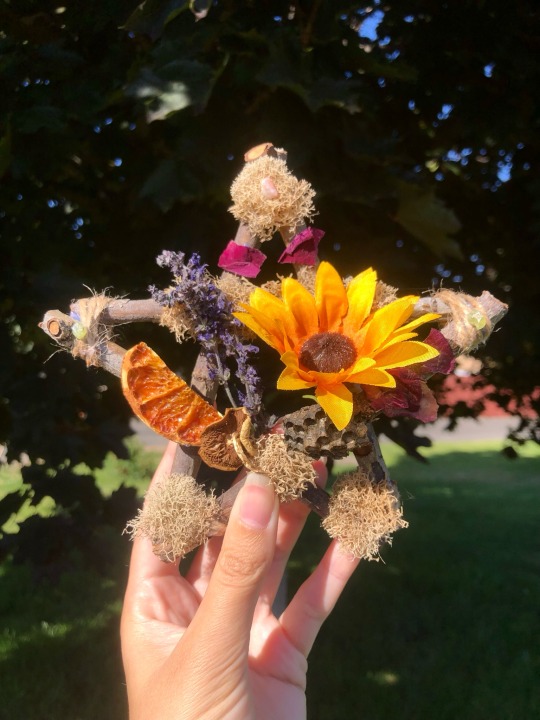
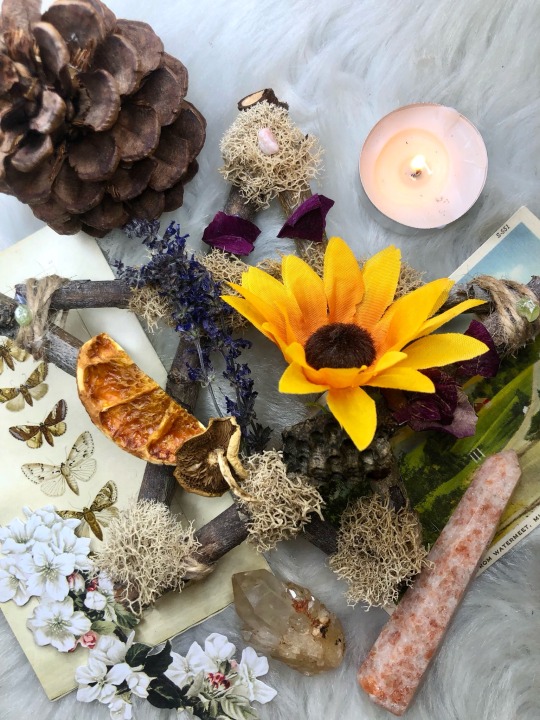
The suns at its finest allowing everything to grow & bloom faster! Tons and tons of abundance, positive energy thrown out, and love spread all around… aiding in growth, prosperity, and protection!
NOW AVAILABLE TO CLAIM
#artists on tumblr#beginner witch#small artist#small business#witch community#witchblr#witchcore#witchcraft#witchythings#art#summer solstice#litha altar#litha 2023#litha celebration#witchy things#witchy tumblr#Pnw witch#altar decor#witch altar#of herbs and altars#floral art#handmade#art for sale
4 notes
·
View notes
Text

RECIPES I KEEP IN MY ONLINE KITCHEN WITCH JOURNAL #2
I love making these oh my gosh.
Why?
It's really fun
It's been a while since my last one
I get an excuse to try yummy recipes
You all are way too good at what you do
It's fun x2
Teas, Drinks, And Syrups
🍊 Orange Peel Tea 🍊
Violet Lemonade
Coconut Summer Drink
Dandelion Honey
The Best Hot Spiced Cider recipe you’ll ever try
Apple Cider is basically a homesteading spell
Rose Lemonade Syrup
100-Year Garlic (Garlic Honey)
Fire Cider Spell for Winter Protection
Blackberry & Apple Jam
Witchy Recipes - Blackberry Lemonade
Baked Goods + Sweets
Prosperity Bread
Lavender Earl Grey Cookies
Easy Rosemary Focaccia Loaf for Love and Protection
Heavenly Lavender Scones
Honey Vanilla Peach Butter 🍑
Pumpkin Pie Dip 🎃
Vanilla-Pumpkin Cupcakes
Soups, Stews, And Dinners
Super simple secret potato soup
Forest Porridge
Heartwarming potato soup
Perfect Homemade Garlic Bread
Creamy vegetable soup
Springtime Soup
Stuffed Maple dijon glazed roasted butternut squash
Summertime stir fry
Sabbat Stuff
Litha Orange Honey Cake
Litha Thyme Chicken
Stuffed Apples for Mabon
Mabon Mug
Imbolc Pretzel wreath
Oatmeal Bread for Lughnasadh
Samhain Mulled Cider
Samhain Irish Apple Cake
Angel's Best
(my favorite recipe posts I've made over the years, plus backstories that sound like your grandmother's reminiscing over the past.)
LATE WINTER BUTTER ROLLS
My first post I ever made. I was pretty new to the tumblr community at the time. I loved kitchen witchcraft, and I'm the type of person who will ramble on about how much I love cooking and baking. This blog gave me an outlet to express my love of cooking, baking, paganism, and witcraft. And these rolls are very tasty, I make them to this day!
WITCHY TOMATO BASIL SOUP
Tasty, simple, and a crowd-pleaser. It's perfect for a beginner kitchen witch! It was also the second recipe I ever posted.
SWEET CREAM BUNS
It was a recipe given to me by one of my good friends at the time. Every time I make it, it gets devoured in less than 10 minutes. It was also my first recipe to get over 50 notes. I was shocked but ecstatic that so many people would even give it the time of day lol.
WITCHY THUMBPRINT COOKIES
These ones were just fun to make and delicious lol.
A WITCH’S COZY BUTTERNUT WINTER SOUP
A quick soup that feeds a lot of people during the fall season. Fall is my favorite season, so of course I'm very biased lol.
SAMHAIN PUMPKIN BREAD
I love pumpkin bread and apple cider... So why not combine the two? This one was definitely one of my favorites of all time. Moist pumpkin bread and chocolate chips have to be one of my favorite things on this planet. It also makes for the perfect gift for friends and family. Yummy!
ANGEL’S AWARD-WINNING LEMON POPPY SEED BREAD
I love dessert loaves of any kind, so naturally, this would be on the list lol.
MAPLE BUTTER COOKIES
Super simple comfort food! I love any time of cookie with brown sugar.
BRING ME POSITIVITY PECAN FRENCH TOAST BAKE
I love French toast, and I love positivity~
SAMHAIN SOUL CAKES RECIPE
These are really good! And traditional. If you celebrate Samhain, I recommend you make some soul cakes and have friends and family help decorate. I give the littles a bag of orange frosting and let them go crazy lol.
FEEL BETTER CHICKEN SOUP
One of my most recent is my witchy twist on chicken noodle soup!
#witches#kitchen witch#witchy#witch#magick#kitchen witch recipes#food#recipes#witchblr#kitchen magick#foodblogger#sabbats#litha#kitchen witch tips#modern witch#modern witchcraft
632 notes
·
View notes
Text
LOW ENERGY LITHA ACTIVITIES
light colourful candles
watch the sun rise or sun set
brew a honey & chamomile tea
burn a floral scented incense
decorate your altar with flowers
eat fresh fruits and berries
open the windows and let fresh air in
admire flowers
read a faerie related book
have a cleansing bath or shower
meditate outside
press some wildflowers in a book
#low energy litha activities#litha activities#litha#witchblr#witchcore#witchcraft#witchlife#white witch#beginner witch#witch tips#grimoire#spirituality#book of shadows
922 notes
·
View notes
Text
Digital Litha Altar 🌼




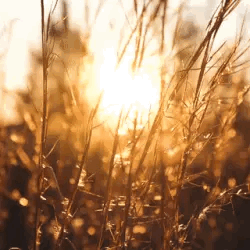
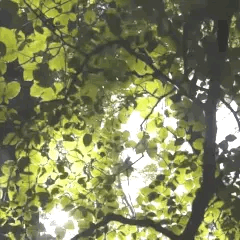

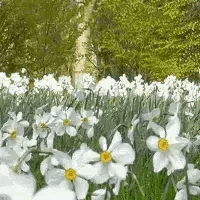

A little moodboard of sorts to use in blog decoration or even just to keep as your altar for any closet witches!
Gifs belong to their rightful owners 🌼
Blessed Litha!
#witch#litha#midsummer festival#midsommar#wheel of the year#spirit witch#fire witch#summer witch#floral witch#green witch#nature witch#imbolc#samhain#Yule#Lammas#moodboard#stim board
457 notes
·
View notes
Text
Witchcraft 101: Wicca & The Wheel of The Year
Paganism - An umbrella term for many nature-based and polytheistic spiritual traditions. Note that not all pagans practice witchcraft.
Wicca - A pagan, nature-based religious movement. Wicca blends aspects of witchcraft, nature veneration, and ceremonial magic. It places a strong emphasis on honoring nature and follows a duotheistic belief system often known as the Triple Goddess and Horned God.
Wheel of The Year
The wheel reflects the cyclical nature of life, death, and rebirth in the natural world and is central to the rituals, spells, and celebrations of many pagan and witchcraft traditions. The Wheel of the Year is divided into eight significant points, which correspond to the Sabbats or festivals:
Samhain (October 31st): Also known as All Hollow's Eve, marks the beginning of the Wheel of the Year and is associated with the end of the harvest season and the onset of winter. Samhain is a time for honoring ancestors, reflecting on mortality, and recognizing the thinning of the veil between the physical and spirit worlds. Samhain is a time to acknowledge the cyclical nature of life and death and to connect with the spiritual realm.
Yule (Winter Solstice, typically around December 21st): Marks the rebirth of the sun, with a focus on light, hope, and renewal during the darkest time of the year. Yule customs include lighting candles or a Yule log, feasting, gift-giving, and spending time with loved ones. It's a significant part of the Wheel of the Year, emphasizing the cyclical nature of life and the changing seasons.
Imbolc (February 1st): Marks the early signs of spring and the gradual return of light and warmth. Imbolc is associated with the Celtic goddess Brigid and is a time for purification, cleaning, and preparing for the coming season's growth. It's often celebrated with rituals, candle lighting, and dedication to Brigid. Imbolc highlights the theme of renewal and the awakening of life after the winter months.
Ostara (Spring Equinox, typically around March 21st): Marks the arrival of spring, where day and night are in balance. Ostara is a time for celebrating fertility, new beginnings, and the growth of life. It is often associated with themes of rebirth, renewal, and the awakening of nature. Common customs include egg decorating, planting seeds, and celebrating the return of warmth and longer days.
Beltane (May 1st): Celebration of fertility, love, and the union of the goddess and god. Beltane is often observed with rituals, bonfires, Maypole dancing, and other festivities that emphasize the vitality and growth of life in the natural world.
Midsummer (Summer Solstice, typically around June 21st): Also known as Litha, marks the longest day of the year when the sun is at its peak. Midsummer is a time for harnessing the sun's energy, celebrating the abundance of nature, and enjoying outdoor festivities. Common customs include lighting bonfires, dancing, and gathering herbs and flowers for magical and medicinal purposes.
Lughnasadh (August 1st): Also known as Lammas, marks the first harvest of the year and is associated with the Celtic god Lugh. Lughnasadh is a festival dedicated to expressing gratitude for the Earth's bountiful harvest and agricultural abundance. Traditional practices during this time involve crafting corn dollies, enjoying meals made from freshly harvested crops, and engaging in various games and competitions.
Mabon (Autumn Equinox, typically around September 21st): Marks the second harvest and a time of balance when day and night are equal. Mabon is a festival for reflecting on gratitude, giving thanks for the fruits of the Earth, and preparing for the darker months ahead. Common customs include feasting on seasonal foods, making offerings to the land, and creating altars with symbols of the season.
#divination#witchcraft#witchblr#grimoire#magick#baby witch#witchery#witchcraft 101#spirituality#broom closet#fyp#sabbaths#paganism#paganblr#wicca
203 notes
·
View notes
Text
Litha Altar Ideas & Elements

Litha, also known as midsummer or the summer solstice, is a Pagan sabbat that honors the longest day of the year and the height of the sun's power. It's a time of light, abundance, and connection to nature. There are infinite ways to create a sacred space that captures the essence of the summer solstice, but here are just a few to get you started.
Choose a Sacred Space
Select a location for your Litha altar that feels harmonious and tranquil. It could be indoors or outdoors, depending on your preferences and available space. Consider placing it near a window to invite in the sun's rays or under a tree to connect with the earth's energy.
Colors of the Solstice
Embrace the vibrant hues of summer by incorporating colors that symbolize the sun and its energy reflected in nature. Opt for warm shades like gold, yellow, orange, and green. These colors evoke the energy of vitality, growth, and abundance.
Sun Symbols
Since Litha revolves around the power of the sun, incorporating sun symbols on your altar is a wonderful way to honor this celestial force. Decorate with solar discs, light catchers, sunflowers, prisms, Helios statuettes, ojos de dios, solar inspired artwork, or sun candles. These symbols remind us of the sun's life-giving energy and its powerful presence during the summer solstice.
Florals
Celebrate the beauty of nature's bounty during Litha by adorning your altar with a selection of fresh, seasonal flowers. Sunflowers, daisies, St John’s Wort, and marigolds are excellent choices. Arrange them in vases or make garlands and wreaths to hang around your sacred space. The vibrant colors and sweet scents will infuse your altar with a delightful atmosphere.
Elemental Representations
Litha is a time to honor the elements and their harmonious interplay. Consider incorporating representations of fire, water, earth, and air on your altar. Candles can represent fire, seashells or a small bowl of water for water, crystals or stones for earth, and feathers or incense for air. These elemental symbols help create balance and align your altar with the natural energies of the season.
Symbols of Abundance
As Litha celebrates the abundance of the Earth, include symbols of prosperity and growth on your altar. Wheat, corn, berries, honeycomb, and seasonal fruits like strawberries, peaches,or cherries can be placed in baskets or on decorative gold bowls. These symbols express gratitude for the bounty of the sun and the abundance it provides.
Ritual Tools and Divination
If you work with ritual tools or divination methods, consider placing them on your Litha altar. This might include a wand, a cauldron, a chalice, runes, or a tarot deck. These tools act as conduits for your intentions and can be charged with the heightened energy of the summer solstice.
Solstice blessings. 🌞
308 notes
·
View notes
Text
Sabbats
Witches, particularly those who follow modern Pagan or Wiccan traditions, often celebrate a series of holidays, known as Sabbats, that are based on the cycles of the seasons and nature. These holidays are divided into two categories: the Greater Sabbats, which are often associated with the equinoxes and solstices, and the Lesser Sabbats, which mark the points between the equinoxes and solstices. Here's an overview of the eight major witchcraft holidays:
1. Samhain (pronounced SOW-IN or SAH-WIN): Celebrated on October 31st (Northern Hemisphere) or May 1st (Southern Hemisphere). Samhain marks the beginning of the Witches' Wheel of the Year. It's a time to honor the dead, reflect on the past, and prepare for the winter months.
2. Yule (pronounced YOOL): Celebrated around the winter solstice (usually December 20th-23rd for Northern Hemisphere, or June 20th-23rd Southern Hemisphere), Yule is a festival of light and rebirth. It's a time to celebrate the return of the sun's strength and the lengthening of days.
3. Imbolc (pronounced IM-BULK or IM-BULG): Celebrated around February 1st-2nd (Northern Hemisphere) or August 1st-2nd (Southern Hemisphere). Imbolc marks the first signs of spring. It's a time to honor the goddess Brigid and welcome the returning life in nature.
4. Ostara (pronounced OST-AR-A): Celebrated around the spring equinox (usually March 20th-23rd for NH, or September 20th-23rd SH), Ostara is a celebration of balance and the arrival of spring. It's a time to honor the goddess Eostre and the fertility of the land.
5. Beltane (pronounced BELL-TAIN): Celebrated on May 1st (NH) or October 1st (SH). Beltane marks the peak of spring and the beginning of summer. It's a time to celebrate fertility, love, and the union of the god and goddess.
6. Litha (pronunced LEE-THA): Celebrated around the summer solstice (usually June 20th-23rd NH, or December 20th-23rd SH). Litha is a time of maximum light and the celebration of the sun's power.
7. Lughnasadh (pronounced LOO-NAH-SA, also called Lammas, pronounced LAH-MUS): Celebrated around August 1st (NH), or February 1st (SH). Lughnasadh is the first of the three harvest festivals. It's a time to give thanks for the first fruits of the harvest.
8. Mabon (pronunced MAH-BON) : Celebrated around the autumn equinox (usually September 20th-23rd NH, March 20th-23rd SH). Mabon is a time of balance and the second harvest festival. It's a time to give thanks for the abundance of the Earth.
These holidays are often celebrated with rituals, feasts, and various customs, including the crafting of seasonal decorations and the lighting of bonfires or candles. It's important to note that the specific dates for these holidays can vary slightly depending on tradition and location, as they are often calculated based on astronomical events.
#witchcraft#witch#green witch#tarot witch#witch community#witchythings#pagan witch#witch aesthetic#witchcore#witchblr
150 notes
·
View notes
Text
Honor the Sun: Summer Solstice ☀️
As the warm rays of the sun envelope us, we find ourselves at the Summer Solstice, also known as Litha or Midsummer. This holiday celebrates the sun’s power.

Summer Solstice is observed on June 21, 2023. This is the longest day of the year, and the shortest night. Litha is about the power of the sun. Before we welcome the dark side of the year, we acknowledge the peak of the solar year.
Many see Litha as a time of balance between light and dark, masculine and feminine energies, and our realm and the other. It’s a time to connect with nature, and enjoy the company of others.
The sun is shining the brightest on this day, symbolizing the peak of light and the triumph of the sun over darkness. The warmth of the sun gives us a sense of renewed strength and inspiration. It’s a reminder to embrace the abundance of beauty and nature surrounding us.
The Anglo-Saxons brought Litha with them to the British Isles when they settled in the 5th and 6th centuries. The Celts celebrated Litha, with the planting season just passing and wanting to call in a great harvest. It was essential to appease the solar Gods in some way. They would have hilltop bonfires and dancing. Many people would jump over the bonfires for good luck.
Many cultures have honored Gods and Goddesses of the Sun. These deities can be worshiped during Litha.
Some traditions believe in the battle of light and dark, where the Oak King and Holly King fight for control. During each Solstice, they battle for power and the balance shifts. The Oak King, who represents daylight, rules from the Winter Solstice to Litha. During this time, the day steadily gets longer. During Litha, when the Holly King wins, the days get darker until Yule.
Litha Correspondences:
Key Words: Warmth, Manifestation, Love, Light, Fertility, Unity, Success, Strength
Symbols: Sun, Flowers, Trees, Mushrooms, Honey, Bees
Herbs & Plants: Chamomile, Lavender, St. John’s Wort, Rosemary, Sunflowers, Daisy, Oranges
Colors: Gold, Green, Light Blue, Orange, Pink
Animals: Bees, Cows, Horses, Dragonfly, Songbirds

How to Celebrate Litha:
For most modern-day Pagans, Litha is a day of inner power and brightness. Fire rituals and barbecues are a common way to celebrate. This holiday celebrates Earth’s abundance and personal power.
Decorate the House and your altar. Adorn your altar with symbols of the sun, flowers, herbs and items that represent Litha. Some ideas: gold objects or coins, yellow and white flowers, lavender, circular items, symbols of the sun, seasonal flowers, fruits or crops (strawberries, sunflowers), citrus fruits.
Gather loved ones for a Litha feast, abundant with seasonal fruits, vegetables and herbs. Having a summer barbecue counts! Savor the flavors of the Earth’s bounty and share in the joy of community. As you dine, express gratitude to the land for the nourishment.
Kindling a bonfire is a time-honored tradition of Litha. Traditionally, people stayed up all night on Midsummer’s Eve to welcome and watch the sunrises. Bonfires were lit on tops of hills and at sacred places to honor the Sun. A bonfire represents the Sun at the peak of its strength. People danced and leaped around them. Coals from the Midsummer fire were scattered on the fields to ensure good harvest.
Today, you can gather friends and family to hold a Midsummer Night’s Fire Ritual. Celebrate the season with a big bonfire and form a circle around the dancing flames. As the fire crackles, offer gratitude for the sun’s life-giving energy. Release any burdens of negativity into the fire, allowing the power of flames to cleanse or renew your spirit. In addition, you can write these things down and burn them in the fire to symbolically let go of what is no longer serving you.
If you prefer spending your time alone this Summer Solstice, there are plenty of small ways you can celebrate.
Craft a beautiful flower crown using vibrant blossoms or herbs that correlate to the holiday. Wear it as a symbol of your connection to nature.
Take a stroll through a blooming garden, a lush forest, or a sunkissed meadow. Listen to the melody of a birdsong, breathe in the fresh air, and take in the majesty of nature. Allow yourself to be in the present moment, embracing the interconnectedness of all beings. Gather flowers, herbs, or stones that resonate with you to use in rituals or as decoration.
Meditate about the light and dark forces in the world or in yourself. Find ways that you can bring more lightness into your life and get in touch with the joyful parts of life. Journal, do yoga, practice self-care or take a walk. Stargazing is another way to reflect on yourself.
Focus on your goals and nurture your intentions. You should see results in the harvest season.
Find a natural body of water such as a river, lake or ocean and immerse yourself in the waters, or at least a part of your body. As you do this, visualize negative energies or emotions being washed away. Offer a prayer of gratitude to the water element for its purifying properties.
Cast spells of fruition. It’s a great time for spells of success, abundance, love, purification, protection and parenthood.
This celebration beckons us to embrace the power of the sun and revel in the abundance of the summer season. Celebrate life, growth, and the eternal cycle of nature. May the blessings of Litha fill our hearts with warmth and inspiration through the year!
For more detail on this celebration, visit this post!
209 notes
·
View notes
Text

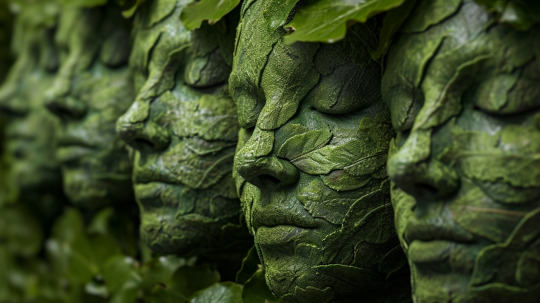
The Green Man: A Celtic Folklore Symbol of Renewal and Growth
Significance of the Green Man
The Green Man has been depicted in art and literature for centuries, and his significance has evolved over time. In some cultures, the Green Man is associated with fertility and the renewal of life. In others, he is seen as a symbol of rebirth and resurrection.
In pagan cultures, the Green Man is often associated with the summer solstice (also referred to as Litha), a time when the days are longest and the sun is at its strongest. In this context, the Green Man represents the power of the sun and the renewal of life that comes with it.
In Christian cultures, the Green Man is often associated with Easter, a time when Christians celebrate the resurrection of Christ. In this context, the Green Man represents the renewal of life that comes with Christ's resurrection.
In modern times, the Green Man has become a symbol of environmentalism and the need to protect the natural world. Many people see the Green Man as a reminder that we are connected to nature and that we have a responsibility to care for the planet.
The Green Man Crystal and Herb Correspondences
Colours and crystals associated with the Green Man may vary depending on the individual or the tradition, as there is no one set of established correspondences that is universally recognized. However, here are some common associations:
Colours:
- Green: As the name suggests, the Green Man is most commonly associated with the colour green, which represents nature, growth, and vitality.
- Brown: The colour brown is also associated with the Green Man, as it represents the earth and the stability of the natural world.
Crystals:
- Emerald: The emerald is a green gemstone that is associated with nature, growth, and abundance, making it a fitting crystal for the Green Man.
- Moss Agate: Moss agate is a green stone with moss-like inclusions, which can be seen as a symbol of the Green Man's connection to nature.
- Green Aventurine: Green aventurine is a crystal that is said to promote growth and vitality, making it a fitting stone for the Green Man.
Other crystals that are associated with nature and the earth, such as jade, malachite, and green tourmaline, may also be appropriate for use in Green Man rituals or meditations. Ultimately, the most important thing is to choose crystals and colours that resonate with you personally and feel appropriate for your connection to the Green Man and the natural world.
Herbs:
Herbs associated with the Green Man may also vary depending on the individual or the tradition, but here are some common associations:
- Oak: The oak tree is often associated with the Green Man, as it is a symbol of strength, stability, and endurance. Oak leaves or bark may be used in Green Man rituals or as an offering to the deity.
- Ivy: Ivy is a climbing plant that is often associated with the Green Man, as it represents the wild, untamed side of nature. Ivy may be used in wreaths or other decorations for Green Man celebrations.
- Hawthorn: The hawthorn tree is associated with fertility, growth, and protection, making it a fitting plant for Green Man rituals. Hawthorn may be used in the form of leaves, flowers, or berries.
- Nettle: Nettle is a plant that is associated with strength and resilience, and is said to be particularly potent when gathered on the eve of May Day. Nettle may be used in teas or as an ingredient in Green Man incense blends.
- Elder: The elder tree is associated with protection and healing, and is said to be a sacred tree in Celtic mythology. Elderflowers or berries may be used in Green Man rituals or as offerings to the deity.
Other herbs that may be associated with the Green Man include rosemary, thyme, and lavender, all of which are associated with nature, growth, and healing.
35 notes
·
View notes
Text
Summer Solstice Deities and Festivities
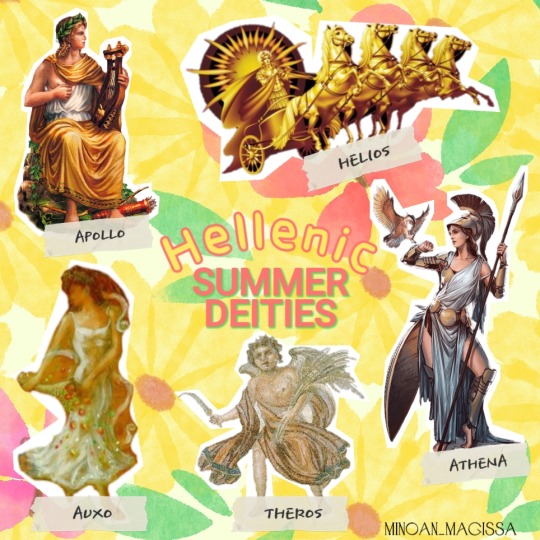
Summer Solstice/Καλοκαίρι/Θέρος/ Litha Blessings to my Northern Hemisphere friends! 🌞
Today also happens to be Arrephoria (Ἀρρηφόρια), a festival in honour of Athena. More on that later in the post!
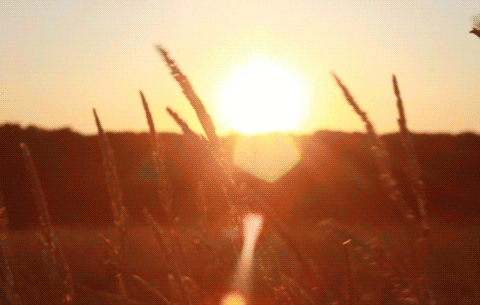
Some info about the summer-related deities in the graphic:
☀️Auxo (Αὔξω) is one of the Horae (Ὧραι), and the goddess and personification of summer. She is also a protectoress of vegetation, growth, and fertility.
☀️Theros (Θέρος) is another personification of summer and is usually depicted as a winged boy holding an ear of grain in one hand and a sickle in the other. Theros is the word for summer in Ancient Greek.
☀️Athena (Ἀθηνᾶ) is the Olympian goddess of wisdom and warfare. Her main festival is the Panathenaia, which was celebrated during Hekatombaion in midsummer. The solstice also starts off with Arrephoria. Sinoika is yet another celebration during the summertime that honours her.
☀️Apollo (Ἀπόλλων) is the Olympian god of sunlight, healing, music, and poetry.
☀️Helios ( Ἥλιος) is the Titan god and personification of the sun. He is also the god of eyesight and oaths.
What I Did Today

I decorated my altar for the solstice and featured summer deities on the center of it.

I ate a (mostly) Mediterranean meal outside in the sunshine: kalamata olive spread, anaheim peppers, & extra virgin olive oil on gluten-free toast, gigantes beans with feta, and Persian cucumbers sprinkled with Greek oregano and paprika. 😋
I also did a lot of research to put together this post. That honestly took up most of my day. 😆
And now onward to Arrephoria!

Arrephoria (Ἀρρηφόρια) stems from the words "ἀρρητον" (mystery) and "φέρω" (I carry/bring). It is a midsummer fertility festival that honours Athena and takes place on the first day of the Estival Solstice.

In Ancient Athens, two young girls from aristocratic families were elected to reside as arrephoroi (άρρήφοροι: virgin acolytes of Athena Polias) at the Arrephorion on the Acropolis for a year at a time. Their main responsibilities included maintaining Athena's sacred olive tree and with the aid of other women, weaving Athena's new peplos.

On the evening of Arrephoria, the girls donned in white clothing placed what Athena's priestess gave them (a mystery item in closed chests) atop their heads. Then, they both carried the chests down (without looking at the items) to the temenos (τέμενος: holy grove) of Aphrodite via a concealed stairway inside the north wall and proceeded to carry something else (possibly dew from the spring) back up to the Acropolis.
With Hekatombaion (the 1st is the Athenian New Year) around the corner, Arrephoria also served as a "tying up" of the old year, ensuring nothing was carried over into the new one.
What you can do for Arrephoria:
📑finish any unfinished projects
👕declutter (i.e. donate clothing you no longer need)
🧹if you didn't clean your altar(s) for Kallynteria, now is the time to do it
💧pour a libation of dew or water for Athena
🍱have a hearty feast and offer some to Athena
*Kallynteria and Plynteria were two rituals that prepared for Arrhephoria.
The myth the ritual itself is based on:
Kekrops (Κέκροψ), the first mythical king of Athens, had three daughters named Aglauros (Ἄγλαυρος), Erse (Ἕρση), and Pandrosos (Πάνδροσος) - each name referring to dew. One night, Athena gave them a closed basket. While she forbade them to open it, Aglauros' and Herse's curiosity got the better of them, so they took a peek, only to see a baby (Ericthonios, Hephaestus' mysterious son).

Seeing as they broke her trust, Athena punished them by making snakes appear out of the basket, merely to scare them. Startled, the two girls jumped off the Acropolis and met their untimely demise.

Pandrosos didn't partake and was spared. Eventually, a shrine was errected in her name (located next to the sacred olive tree). Therefore, on Arrephoria, Pandrosos (in addition to Athena) were commemorated, and the two arrephoroi fulfilled the unfinished duty of the other two.
Sources: "Girls and Women in Classical Greek Religion" by Matthew Dillon, Hellenion.com: Arrephoria, Archaeology.org: Acropolis Arrephorion Restoration
#summer solstice#summer#midsummer#litha#arrephoria#athena#ancient athens#hellenic polytheist#hellenic pagan#hellenic polytheism#hellenic religion#greek mythology#hellenismos#ancient greece#theros#athena devotee#athena devotion#Spotify
142 notes
·
View notes
Text
herbs for the summer solstice: 🌞

i’ve been wanting to write more about alchemy and herbalism, but i also wanted to connect it to astrology !! so today i’ll be talking about a few solar herbs and how they can be used to celebrate litha:
juniper: burn the leaves as a form of smoke cleansing, use the berries in your cooking
marigold: plant one in your garden or keep on potted near your front door
chamomile: use a candle or lotion with chamomile in it. you can also drink chamomile tea
saffron: offer some on your altar or use it in your cooking
rosemary: sprinkle some in a line outside your front and back doors to protect your space. use the essential oil as you clean surfaces
sunflower: decorate the house with these or feed your local birds with some sunflower seeds
bay leaves: write a wish down on a bay leaf and burn it
st. john’s wort: hang some near a window or put a little bit in a candle to anoint it
A FEW POINTERS:
perform the ritual during a sun hour
bathe the herbs in sunlight before using them
make sure the herbs have been dried
burn the herbs or involve fire in your ritual
wear gold jewelry or yellow clothing while you do your spellwork
use yellow paper or yellow ink for your spell petition(s)
book a reading !!
my linktree
#astro#astrology#astroblr#astro thoughts#astro community#planets#planets in astrology#zodiac#zodiac signs#horoscope#witchblr#witch tips#witchcraft#witchy thoughts#witchy things#witch community#witch blog#witch stuff#spells#the sun#the sun in astrology#summer solstice#litha#herb magick#herbal magick#herbal magic#herbal witch#herbal witchcraft#herbology#herbalism
91 notes
·
View notes
Photo
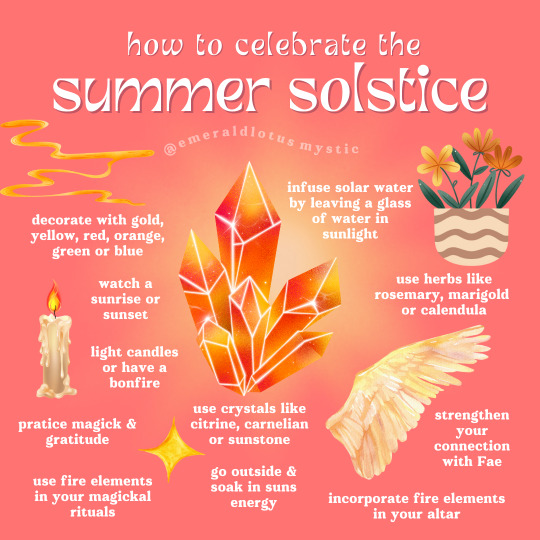
How to Celebrate the Summer Solstice | Witch Tips
How should you celebrate the summer solstice? Also known as Litha, the summer solstice is one of the best times of year to manifest. It’s great for performing spells to increase abundance, passion, creativity, health and protection. With the vital power of the sun at its highest point, we have the longest day of the year to embrace life.
What can you do to celebrate the Summer Solstice?
Here are some tips you can practice as a witch or spiritual being who wants to get the most out of this special time.
Go outside & soak in the suns energy
Spend time enjoying the sun and its energy as it can purify and restore you spiritually.
Watch a sunrise or sunset
Embrace time outside by seeing the sun at its highest point, when it rises or when it sets. Regardless of when you’re able to get outside, take a second to appreciate the suns glow.
Light candles or have a bonfire
Traditionally, a bonfire and fire jumping were common practices during the Celtics celebrations of Litha. It was said that jumping or crossing through the fire would bring good luck. Please be mindful not to burn yourself, but it can be great to sit near a fire during this time. If a fire is not possible, lighting of a candle can also be done to invoke the energy of the sun.
Infuse solar water by leaving a glass of water in sunlight
Letting the suns rays infuse water can be done for many reasons. Some witches use Sun water similar to the popular Moon water where they will use the infused water in rituals and spellwork. You can opt to drink your solar water for the benefits of the sun (although please do not drink stagnant water and be mindful to refrigerate the water and drink it only within a day or two). You can use the solar water to water plants, cleanse crystals, cleanse your home, make sprays and infusions, etc.
Decorate with gold, yellow, red, orange, green, blue and white
Gold and yellow represent the suns rays. They also symbolize abundance, joy, confidence and optimism.
Red for passion. strength and courage.
Orange for vitality, health, joy and creativity.
Green represents the grass, nature, and the flourishing of new life.
Blue as an opposing color for the flames of the solstice to help balance with the calming, relaxing, watery colors of blue.
White because it is aways appropriate as it purifies and represents all colors.
Use herbs like rosemary, marigold, calendula
Herbs best used during the summer solstice include Rosemary, Marigold, Calendula, Rose, St. John's Wort (do not ingest if you take SSRI medication), Chamomile, Mugwort, Lavender, Hemp, Vervain, Sage, Mint and Thyme.
Use crystals like citrine, carnelian or sunstone
The best crystals to use during the summer solstice include citrine, carnelian, sunstone, golden healer quartz, amber, tiger’s eye, topaz, pyrite, peridot.
Use fire elements in your magickal rituals
Using the colors, herbs and crystals listed above. As well as incorporating flames, candle magick, fire related sigils, flame readings, etc.
Incorporate fire elements in your altar
See above for colors, herbs, and crystals to consider including in your altar. Having gold decoration pieces on your altar can be great at this time. You can also include fairies and Fae themed items on your altar to represents the connection to Fae at this time.
Pratice magick & gratitude
Summer solstice is a heightened time for magickal workings making it perfect to do your spell work, rituals and manifestations. It’s also important to practice gratitude for what the first half of the year has given us, for the seeds that have bloomed from the spring, and for the remainder of the year still ahead of us. Taking time to be grateful for all that we have in life is always a blessed opportunity and the summer solstice is a great time for reflection and shining a light on areas of our lives we want to improve upon.
Strengthen your connection with Faeries / Fae
Summer solstice is known as one of the best times of year for the veil to thin between our realm and the realm of the Fae. With the veil thin, it can be a great time to strengthen your relationship with the Fae by leaving them offerings and paying attention to notice their presence as you enjoy your blissful and abundant day. You can invite them to live in your garden or plants around your property. There is also the dance of the Fae, where many practitioners will dance and let loose to help invoke your intentions an inviting the Fae to join.
Please do note, the Fae can be quite impish and mischievous, so it is important to wear protection and do your research beforehand if you haven’t worked with them before.
Some lovely offerings to leave the Faeries include:
Mead
Honey
Wine
Milk
Herbs (see list above)
Sweets
Candles
Flowers / Flower Crowns
#witch tips#summer solstice#summer solstice ritual#ritual#new moon#litha#midsummer#witchy#faeries#fae#witchcraft#witch#witchcraft beginner#astrology#divine guidance
106 notes
·
View notes
Text

Hey, lovely witchlings! As the sun reaches its zenith and the earth is in full bloom, we come to Litha, the summer solstice, a time of abundance, vitality, and celebration. This Sabbat marks the longest day of the year and the peak of solar energy, when the sun's power is at its strongest.
A Briefing on the History:
Litha, also known as Midsummer or the Summer Solstice (Northern hemisphere: June 20th or 21st; Southern hemisphere: December 20th or 21st), is a magical time when the sun reaches its zenith in the sky. It’s the longest day of the year, and the sun seems to pause, bathing the earth in its warm glow. Our ancestors celebrated this pivotal moment with fire and water, acknowledging the balance between light and darkness. Stone circles like Stonehenge were oriented to capture the rising sun on this sacred day. Early European traditions included lighting large wheels on fire and rolling them down hills into bodies of water. The Romans honored this time as sacred to Juno, goddess of women and childbirth, giving us the month of June.
History:
Ancient Roots: Litha has ancient origins and has been celebrated by various cultures and civilizations throughout history. It is often associated with sun worship and the celebration of light, fertility, and abundance.
Solar Phenomenon: Litha occurs around June 20th or 21st in the Northern Hemisphere when the sun reaches its highest point in the sky, resulting in the longest day and the shortest night of the year.
Symbolism: The Summer Solstice symbolizes the triumph of light over darkness, as well as the peak of growth and vitality in the natural world. It is a time of celebration, joy, and abundance.

Correspondences:
-> Symbolism: Life, fire, rebirth, transformation, power, purity
-> Colors: Red, gold, orange, yellow, white, green, blue
-> Herbs: St. John’s Wort, lavender, rose, peony, vervain, chamomile, chickweed, chicory, sunflower, lily, thyme, and more
-> Crystals: Lapis, diamond, tiger’s eye, emerald, jade, and other green stones
-> Animals: Butterflies, wren, horses, stags, robins, cattle, phoenixes, dragons, faeries, satyrs
Here are a few ways to honor the magic of Litha:
Rituals and Activities:
- Bonfires: Light a bonfire to honor the sun’s power.
- Sunrise/Sunset Greeting: Greet the sun at its highest point in the sky.
- Create an Altar: Decorate it with sunflowers, oranges, and yellow candles.
- Cleansing Herb Bundle: Make your own bundle for purification.
- Sun Tea: Brew tea using sun-infused water.
- Burn a Bay Leaf: Write intentions on a bay leaf and burn it
- Fertility Ritual: Litha is a time of fertility and growth, and rituals may focus on promoting abundance, creativity, and prosperity. Some practitioners may plant seeds or perform fertility rites to symbolize the fertile energy of the Earth.
Modern Celebrations:
-> Community Gatherings: Many Wiccan and pagan communities host public rituals and gatherings to celebrate Litha, inviting people of all backgrounds to join in the festivities and honor the sun's energy.
-> Altar Decorations: Altars are adorned with symbols of the sun, such as gold or yellow candles, sunflowers, citrus fruits, and solar symbols like the sun wheel or the Celtic solar cross.
-> Feasting: Traditional foods associated with Litha include fresh fruits, vegetables, honey, bread, dairy products, and grilled meats. These foods celebrate the abundance of the summer harvest and nourish the body and spirit.
-> Nature Walks: Taking a nature walk or spending time outdoors is a simple yet meaningful way to connect with the energy of Litha and appreciate the beauty of the natural world during the height of summer.

Recipes:
1. Mead: A honey wine enjoyed by our Celtic and Norse ancestors and many to this day. It is easier to support local experts in the craft of making this than starting up a whole kit of making mead. Choose wisely. (I included a basic starter recipe for those brave enough to venture into the fermentation game. I'll stick to supporting my local businesses!)
2. Sun Tea: If you are unable to drink alcohol or prefer not to, sun tea is a great alternative or a great addition to your Litha celebration! They are called "sun tea" because it is tea brewed from the warmth of direct sunlight! If the weather is cloudy, sun tea may not be the best recipe to try. Common sense <3!
5. Sunflower Seed Pesto Pasta: Cook pasta (such as penne or fusilli) according to package instructions. In a food processor, combine fresh basil leaves, garlic cloves, sunflower seeds, Parmesan cheese, olive oil, and a squeeze of lemon juice. Blend until smooth. Toss the cooked pasta with the sunflower seed pesto, cherry tomatoes, and sliced summer squash or zucchini. Serve topped with additional Parmesan cheese and fresh basil leaves.
6. Summer Solstice Salad: Mix a variety of fresh greens, such as spinach, arugula, and butter lettuce. Add sliced strawberries, blueberries, and orange segments for a burst of color and sweetness. Sprinkle with toasted almonds or walnuts and crumbled goat cheese or feta cheese. Drizzle with a dressing made from olive oil, balsamic vinegar, honey, and a pinch of salt and pepper.
6. Grilled Vegetable Platter: Slice a selection of summer vegetables, such as bell peppers, eggplant, zucchini, yellow squash, and red onions. Brush the vegetables with olive oil and season with salt, pepper, and your choice of herbs (such as rosemary or thyme). Grill the vegetables until tender and lightly charred, then arrange them on a platter. Serve with a dipping sauce made from Greek yogurt, lemon zest, garlic, and fresh herbs.
7. Honey-Lavender Lemonade: In a saucepan, combine water, honey, and dried lavender buds. Heat gently until the honey is dissolved, then remove from heat and let the mixture steep for 15-20 minutes. Strain the lavender-infused honey mixture into a pitcher and discard the lavender buds. Add freshly squeezed lemon juice to the pitcher and stir to combine. Serve the honey-lavender lemonade over ice, garnished with fresh lavender sprigs and lemon slices.
8. Berry Galette: Prepare a simple pie dough or use store-bought dough for the crust. Roll out the dough and transfer it to a baking sheet lined with parchment paper. In a bowl, mix fresh berries (such as strawberries, raspberries, and blueberries) with sugar, cornstarch, and a squeeze of lemon juice. Spoon the berry mixture onto the center of the dough, leaving a border around the edges. Fold the edges of the dough over the berries, pleating as needed. Brush the edges of the dough with milk or beaten egg, then sprinkle with coarse sugar. Bake the galette in a preheated oven until the crust is golden brown and the berries are bubbling. Serve warm with a scoop of vanilla ice cream or whipped cream.

Remember, Litha is a celebration of the sun’s abundance and the Earth’s fertility. Embrace the warmth, dance, and honor the cycles of life. Blessed be! 🌻🔥🌿
Note: This post is a brief overview. For more details, explore the rich traditions and make Litha your own! 🌞🌙
#queue the magick#witchcraft#witchblr#witch#reference#magickkate#kitchen witch#sigils#green witch#witchy#witchcraft 101#witch aesthetic#witchy vibes#witches#baby witch tips#beginner witch#baby witch#college witch#college witch tips#cottage witch#witch community#witchcraft community#witchcore#witch tips#witchtok#witchy shit#witches of tumblr#witch blog#witchyvibes
8 notes
·
View notes
Text
WHAT IS LITHA?
Falls on the Summer Solstice between June 19-21 in the Northern Hemisphere & December 21 in the Southern Hemisphere
A time to express gratitude to the light with bonfires, spending time in nature, or by honoring sun deities
Also known as Midsummer, it's the longest day of the year & the official start of summer
The Holly King, who represents darkness, wins a battle against they rel king it dare recents steadily darker until Yule
In Folklore, it's the time when the sun god's power is at its greatest having impregnated the maiden goddess who now transforms into the mother
Celebrate with a lest baling herds, communing with the fae, and dancing
Decorate with flowers, sun representations, crystals like citrine or sunstone. and bright colored candles
Themes of abundance, love growth, fertility, & prosperity
#litha#witchblr#witchcore#witchcraft#witchlife#white witch#beginner witch#witch tips#grimoire#spirituality#book of shadows
182 notes
·
View notes
Text
2023 Capricorn Solstice
Friday, December 22, 2023, 03:27 UT
Chart erected for Washington, DC (Thursday, December 21, 22:28 EST)
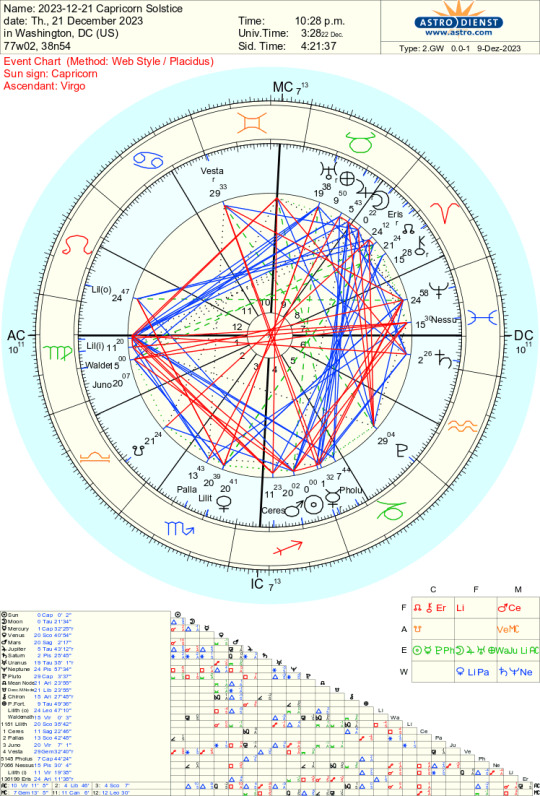
Merry Yule north of the equator, and Merry Litha south of it!
I just love this chart. There is a fantastic double sextile (I think some people call them “mini grand trines” but “double sextile” is more accurately descriptive):
the Sun and Mercury Rx in Capricorn, are sextile Saturn/Pisces;
Saturn/Pisces is sextile the Moon and Jupiter Rx in Taurus;
the Sun and Mercury Rx are trine the Moon and Jupiter Rx.
An Earth sign trine giving us great potential for practical, material achievement and blessings - and Saturn/Pisces working to help, asking us to aim high. Not so much “fabulous earthly success,” though, as “living up to our higher ground.” We’re really motivated to do things. With both Mercury and Jupiter retrograde, we’re more thoughtful. If you’re working on your New Year’s Resolutions, this is good energy for coming up with sterling ones.
Warnings include being aware (wary) of fanaticism, either our own or others’; going to emotional extremes because we’re bored; and staying in toxic situations because we are related or married to the perpetators.
It will also be easy to snooze on through the promise of the double sextile. We have to actively take advantage of it.
🎄🎄🎄
This time of year always makes me think of cookies. My maternal grandma absolutely excelled as a baker, my mom was a very close second - and every December they collaborated on baking many different kinds of cookies. My younger sister and I were allowed to decorate the sugar cookies, using colored icing and various sprinkles. Good times.
Alas, I did not inherit that “baking” gene - but my family had another tradition I can pull off: dessert after Christmas dinner was always peppermint ice cream. My daughter and I improved on that when we discovered that putting some chocolate sauce on the peppermint ice cream, is ambrosia.
Every year, on or about Christmas Eve, the transiting Sun is sextile my natal Neptune. This is one Neptune thing I can and do pick up on - even as a little girl, at night I would take myself off and sit alone by the Christmas tree, enjoying the silence and the lights. No thinking about “the significance and message of the season,” just the peace and quiet.
14 notes
·
View notes
Text
𝓼𝓪𝓫𝓫𝓪𝓽𝓼
these are pagan holidays that's on the wheel of the year. many of them are linked to an annual solstice or equinox. there's eight different sabbats to celebrate
𝐲𝐮𝐥𝐞 (𝟐𝟎-𝟐𝟑 𝐝𝐞𝐜𝐞𝐦𝐛𝐞𝐫): the winter solstice marks the first day of winter and the shortest day of the year. a solar festival in celebration of the return of the sun and light. the solstice is a turning point in the wheel of the year, when the sun symbolically dies and is reborn. it is a twelve day party to celebrate the rebirth of the sun. it is also a time to strengthen bonds with family and friends
𝐢𝐦𝐛𝐨𝐥𝐜 (𝟏𝐬𝐭 𝐟𝐞𝐛𝐫𝐮𝐚𝐫𝐲): imbolc marks the midpoint of winter, it is the return of the sun, banishing winter and welcoming the wake up call of spring, a festival of lights. the day is celebrated with candles and fire to symbolize the power of the sun's illumination in nature and new beginnings in ourselves. it represents spiritual growth
𝐨𝐬𝐭𝐚𝐫𝐚 (𝟏𝟗-𝟐𝟐 𝐦𝐚𝐫𝐜𝐡): ostara is a festival celebrating the eternal cycle of nature. on this day, witches traditionally decorate their houses with wreaths of brushwood, colorful ribbons and flowers to welcome the spirits of nature. this holiday is the second of three spring celebrations, during which light and darkness are again in balance, with light on the rise. it is a time of new beginnings and of life emerging further from the grips of winter
𝐛𝐞𝐥𝐭𝐚𝐧𝐞 (𝟏𝐬𝐭 𝐦𝐚𝐲): beltane marks the emergence of the young god into manhood. stirred by the energies at work in nature, he desires the goddess. they fall in love, lie among the grasses and blossoms, and unite. the goddess becomes pregnant of the god. witches celebrate the symbol of her fertility in ritual. in celebration of the day witches rose at dawn to gather flowers and green branches from the fields and gardens, using them to decorate the may pole, their homes and themselves. the flowers and greenery symbolize the goddess, the pole the god. beltane marks the return of vitality, of passion and hopes cunsummated
𝐥𝐢𝐭𝐡𝐚 (𝟏𝟗-𝟐𝟑 𝐣𝐮𝐧𝐞): the summer solstice celebration marking the longest day and shortest night of the year. a solar festival when the power of the sun is the highest, brightest and longest. nature is alive, fields and fruits are growing towards harvest. herbs gathered on this day are extremely powerful. at twilight on this day the portals between the worlds open and the faery folk may pass into our world. field and forest elves, sprites and faeries abound in great numbers making this a great time to commune with them. the warm and light, the abundance and beauty of the earth and all she provides is celebrated on litha
𝐥𝐮𝐠𝐡𝐧𝐚𝐬𝐚𝐝𝐡 (𝟏𝐬𝐭 𝐚𝐮𝐠𝐮𝐬𝐭): is marking the middle of summer and is the first of three harvest celebrations. this is when plants first start to drop fruits or seeds and the lands are ripe for harvesting. we celebrate the bounty of the earth with the first harvests of grain, wheat, fruits and vegetables. celebration begins the night before with large feats and plenty of food and drink. it is the time to complete the goals and projects you have started and planted in yourself earlier in the year
𝐦𝐚𝐛𝐨𝐧 (𝟐𝟏-𝟐𝟒 𝐬𝐞𝐩𝐭𝐞𝐦𝐛𝐞𝐫): also known as the second harvest. a time when the darkness of night begins to conquer the light of day. it is the time to celebrate the harvest and the hard work done, as well as to thank the earth for it's beautiful harvest of fruit, squash, grains and vegetables. mabon is also known as the witches thanksgiving, a time to give thanks for all we have, for all we are and for all the future holds
𝐬𝐚𝐦𝐡𝐚𝐢𝐧 (𝟏𝐬𝐭 𝐧𝐨𝐯𝐞𝐦𝐛𝐞𝐫): october 31st marks the end of summer, the decline of day light and increased darkness. the witches new year and time for remembering and honoring the dead. the veil between the physical and spiritual worlds is the thinnest now, allowing spirits and souls to have the ability to visit us by moving freely between the worlds. since the doorway is open faeries and other creatures of folklore may wander among the living as well. samhain is also known as halloween, all hollows eve, day of the dead, celtic winter etc. it is the last day of the witches calendar year and time to tie up loose ends and put things to rest. it is time to bid fare well to the sun and prepare for the cold winter months ahead. we celebrate reincarnation and honor death as a part of the sacred circle of life. we remember our ancestors and all those who have passed and gone before us by inviting them into our circles. we burn bonfires and it is a time of endings and personal reflection, a time to get rid of unsavory personal characteristics and break bad habits by writing them on a piece of paper, tossing and burning them in a cauldron
20 notes
·
View notes